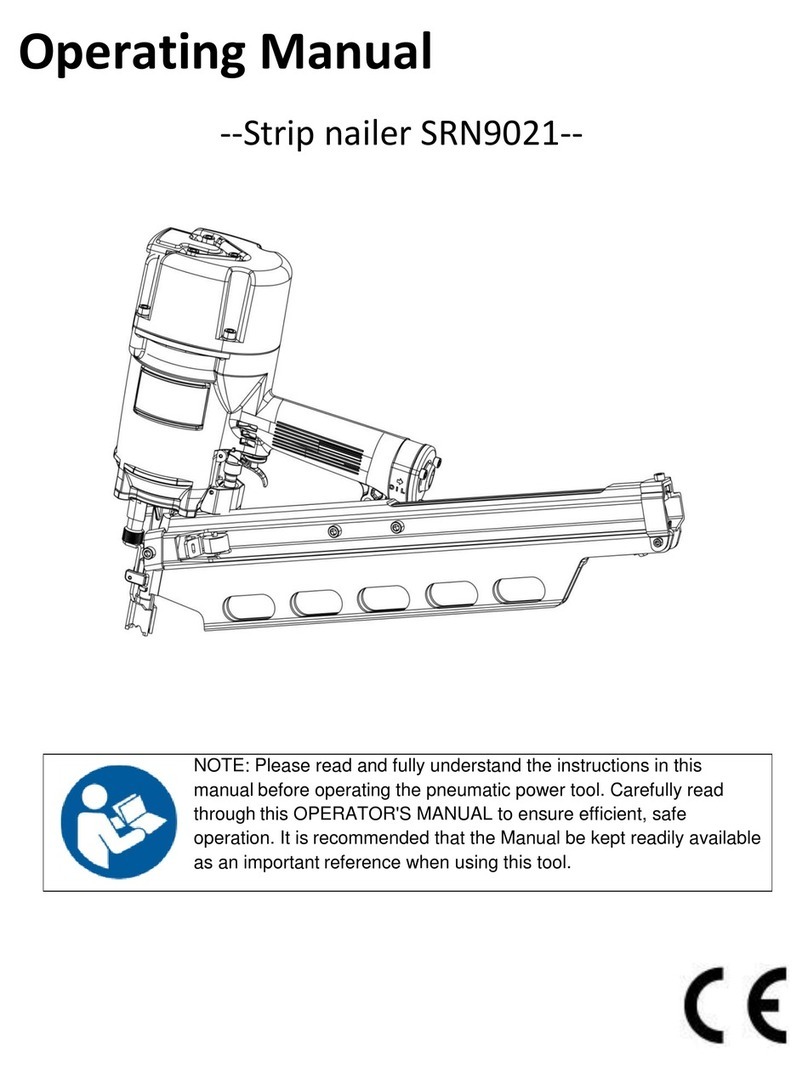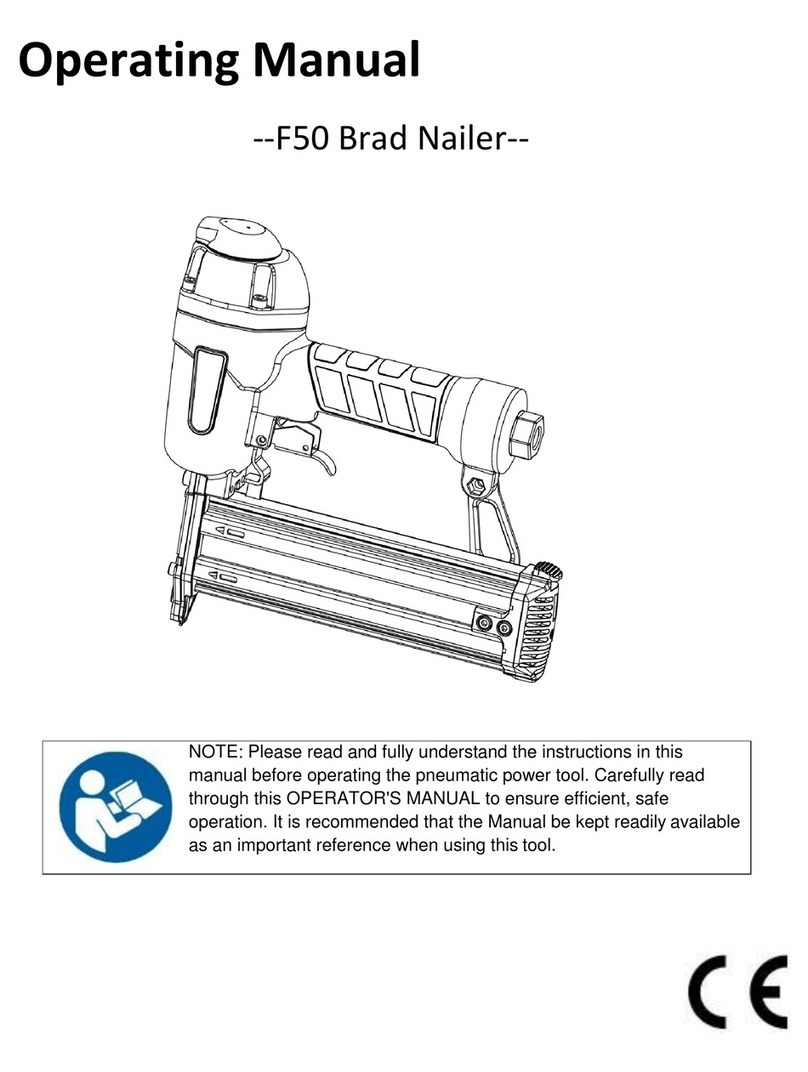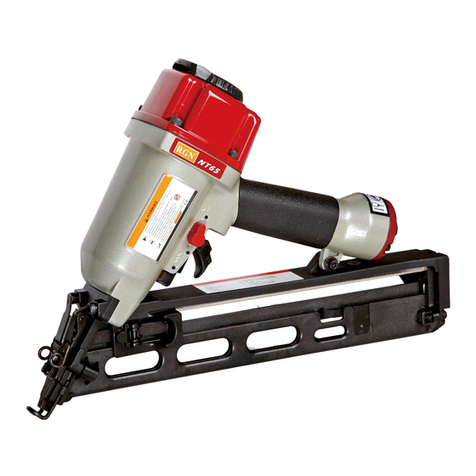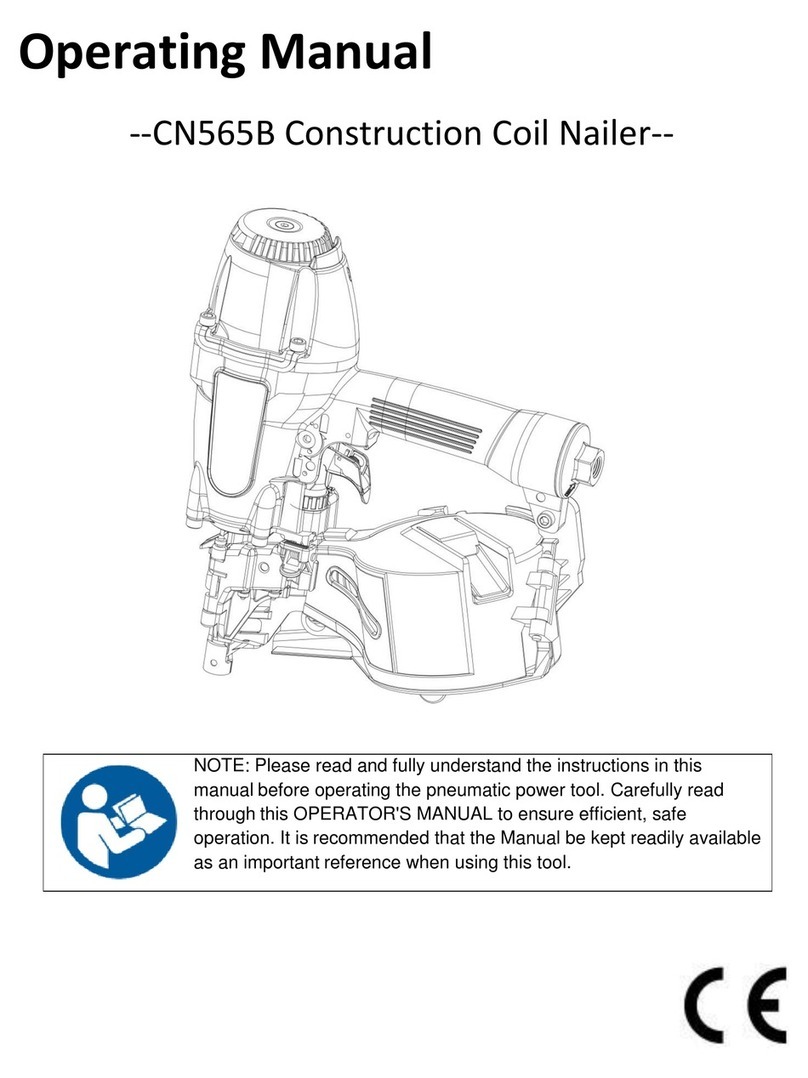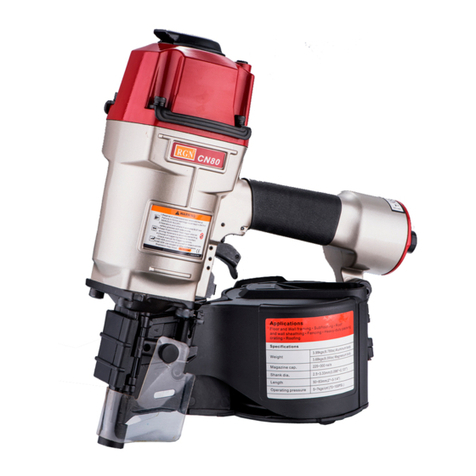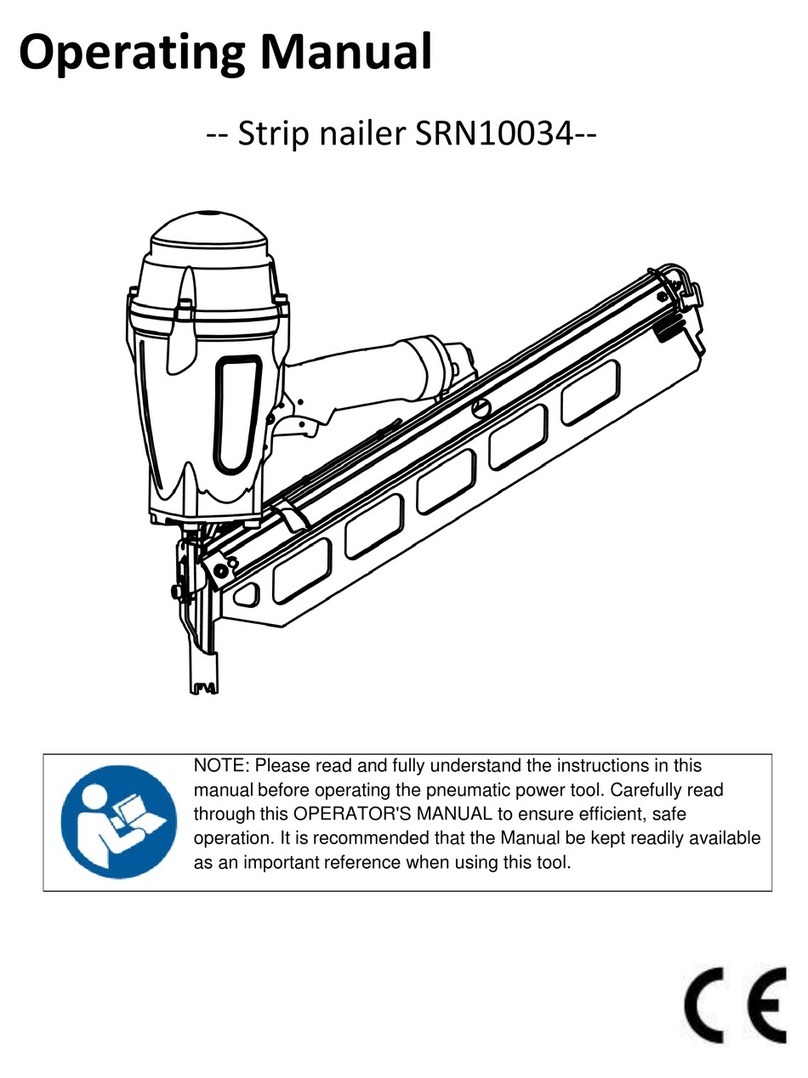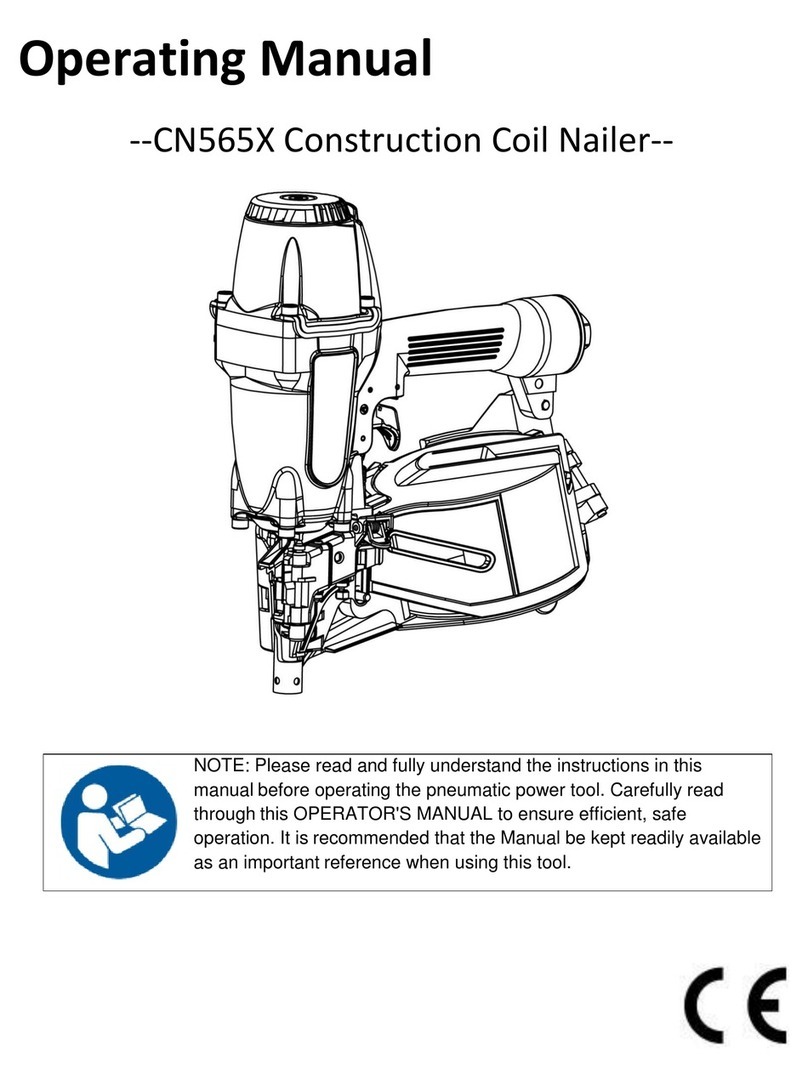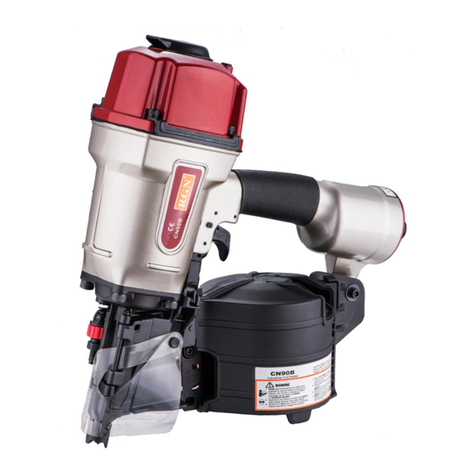
3
WARNING:
The operating instructions shall draw attention to the following
a) Only those fasteners listed in the operating instructions may be used in the fastener driving
tools;
NOTE: The fastener driving tool and the fasteners listed in the operating instructions must be
seen as one unit system in terms of technical safety.
b) Only the main energy and the lubricants listed in the operating instructions may be used;
c) Fastener driving tools marked with an inverted equilateral triangle standing on one point
may only be used with an effective safety yoke;
d) Fastener driving tools equipped with contact actuation or continuous contact actuation,
marked with the symbol “Do not use on scaffoldings, ladders”, shall not be used for specific
application for example:
when changing one driving location to another involves the use of scaffoldings, stairs, ladders,
or ladder alike constructions, e.g. roof laths, closing boxes or crates, fitting transportation
safety systems e.g. on vehicles and wagons;
e) For the maintenance of fastener driving tools, only spare parts specified by the
manufacturer or his authorized representative shall be used;
f) Repairs shall be carried out only by agents authorized by the manufacturer or by other
specialists, having due regard to the information given in the operating instructions;
NOTE: Specialists are those who, as a result of professional training or experience, have
sufficient expertise in the field of fastener driving tools and sufficient familiarity with relevant
governmental industrial protection provisions, accident prevention regulations, directives and
generally recognized technical regulations (e.g. CEN- and CENELEC-standards), to be able to
assess the safe working condition of fastener driving tools.
g) Stands for mounting the fastener driving tools to a support for example a work table, shall
be designed and constructed by the stand manufacturer, in such a way that the fastener
driving tool can be safely fixed for the intended use, thus for example avoiding damage,
distortion or displacement.
Additional instructions for fastener driving tools operated by compressed air
a) Fastener driving tools operated by compressed air shall only be connected to compressed
air lines where the maximum allowable pressure cannot be exceeded by a factor of more than
10%, which can for example be achieved by a pressure reduction valve which includes a
downstream safety valve;
b) When using fastener driving tools operated by compressed air, particular attention must be
paid to avoid exceeding the maximum allowable pressure;
c) Fastener driving tools operated by compressed air should only be operated at the lowest
pressure required for the work process at hand, in order to prevent unnecessarily high noise
levels, increased wear and resulting failures;
d) Hazards caused by fire and explosion when using oxygen or combustible gases for
operating compressed air operated fastener driving tools.







